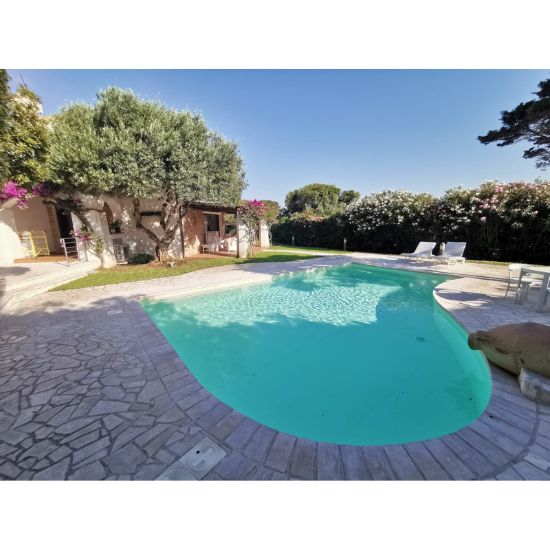Sardinia enjoys a Mediterranean climate, with hot and sunny summers and mild winters. Discover the best times to visit, whether you’re drawn to the heat of summer, the milder shoulder seasons, or the serene charm of winter. We’ll also unveil the seasonal highlights, so you can plan your visit to coincide with the experiences that matter most to you.
So, if you’re ready to uncover the secrets of Sardinia’s weather and plan your perfect getaway, read on for an insider’s guide to this captivating Mediterranean gem.
Average Weather Conditions:
Data obtained from the Cagliari/Elmas weather station provides insights into Sardinia’s climate:
– Average Daily Maximum Temperatures (°C): Sardinia experiences a range of temperatures throughout the year, with January averaging at 14.6°C and peaking in July and August at around 30°C.
– Average Relative Humidity (%): The island sees relatively high humidity levels, with percentages ranging from 63% in June to 81% in January.
– Average Rainfall (mm): Sardinia’s rainfall varies significantly by month, with the wettest month being November, receiving around 69mm, while July and August typically see very rarely rain.
– Average Daily Sunshine (hrs): Sunshine is abundant in Sardinia, especially during the summer months, with July boasting an average of 11 hours of sunshine per day.
– Average Wind Speed (mph): The island experiences moderate wind speeds throughout the year, with the highest averages occurring in March and April.
Best Time to Visit:
Spring:
– Pros: March to May sees warming temperatures, perfect for outdoor activities and exploring the island’s natural beauty. It can be windy at times, and it attracts surfers.
– Cons: April tends to be the wettest month during this season, so occasional rain showers are possible.
Summer:
– Pros: June, July, and August boast minimal rainfall and high temperatures, ideal for beachgoers and outdoor enthusiasts.
– Cons: Busy beaches and high prices due to the peak of the summer season.
Autumn:
– Pros: September maintains summer warmth, with fewer tourists and pleasant temperatures, making it ideal for a more peaceful visit.
– Cons: October and November see a gradual decline in temperatures and an increase in rainfall.
Winter:
– Pros: Winters are mild, offering an excellent opportunity to experience the island’s authentic charm without the summer crowds.
– Cons: Some establishments may be closed, and it’s the quietest time of the year. January sees the lowest temperatures.
The average temperatures, month by month:
– January: 10°C (50°F)
– February: 14.8°C (58.6°F)
– March: 16.5°C (61.7°F)
– April: 17.5°C (63.5°F)
– May: 20.5°C (68.9°F)
– June: 24.5°C (76.1°F)
– July: 28.5°C (83.3°F)
– August: 30.8°C (87.4°F)
– September: 26.5°C (79.7°F)
– October: 22.5°C (72.5°F)
– November: 17.3°C (63.1°F)
– December: 14.3°C (57.7°F)
Conclusion
With its favorable climate year-round, Sardinia offers something for every type of traveler.
Whether you’re seeking a home surrounded by nature, a sun-soaked beach vacation, or a cultural immersion, this Mediterranean gem promises a memorable experience whenever you choose to visit.




